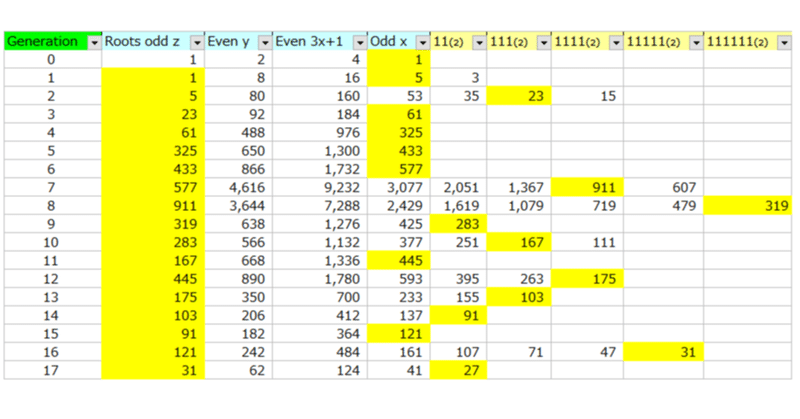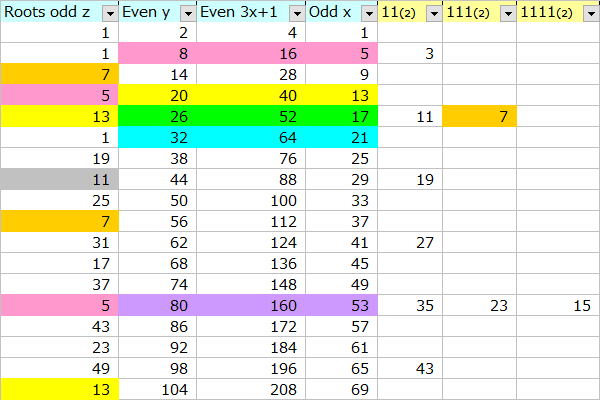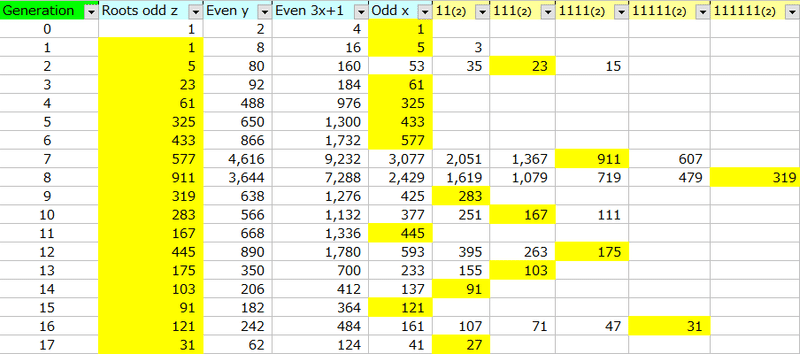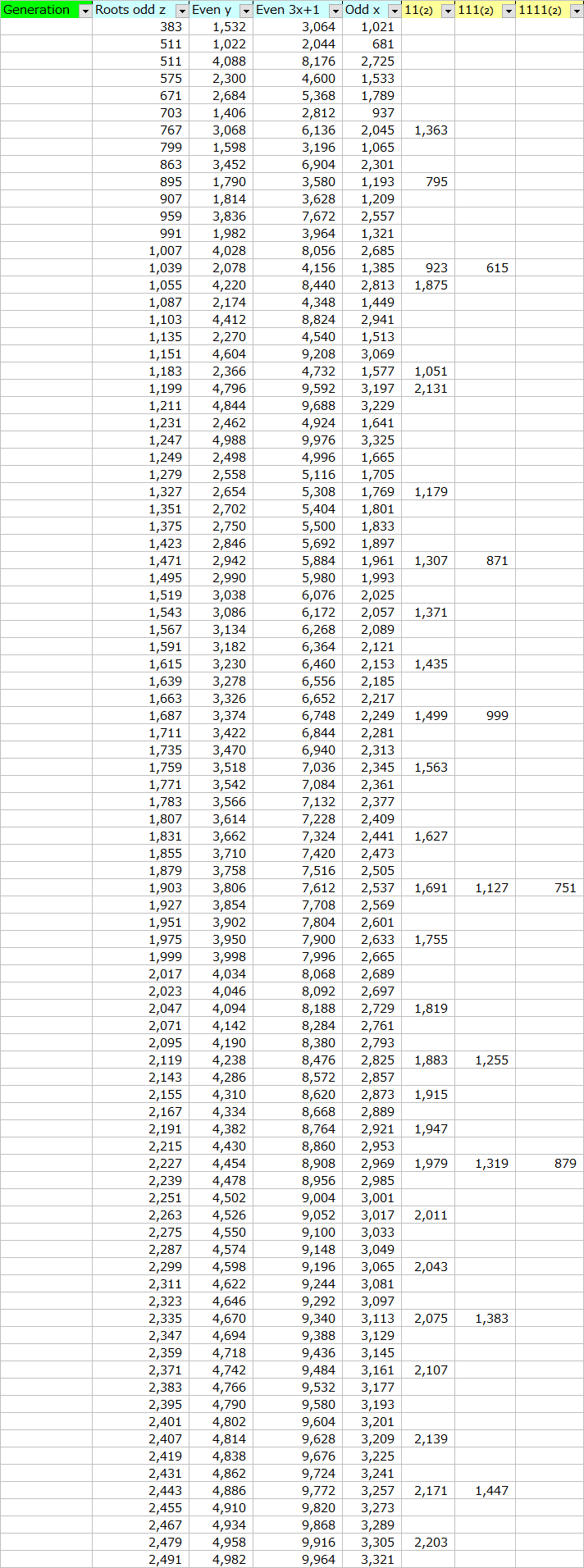
Proof of Collatz conjecture by formulating bottom-up method
Abstract
The Collatz conjecture is a mathematical problem that predicts that any positive integer will eventually converged to 1, if odd numbers is multiplied by 3 and added 1, else even numbers divided by 2. This paper proves the correctness of the Collatz conjecture by formulating bottom-up method from 1 to the opposite direction.
Key Words and Phrases
Collatz Conjecture, Collatz Sequence, Bottom up Method, Group theory.
Introduction
Other forms of the Collatz conjecture [1] explain the bottom-up method by stating that "instead of proving that every positive integer eventually becomes 1, we only need to prove that 1 leads backwards to every positive integer." but it is only a conjecture that it would form a tree, as there is no formulation in which all natural numbers appear once in the tree. The purpose of this paper is to formulate it.
■3n+1問題の書き換え(*3)■
ツリー1にはすべての自然数が1回ずつ登場する
これが証明できれば,3n+1問題は解決してしまうが,・・・.
Odd Collatz pairs of shortcut
Every positive odd (x = 2n + 1) has a pair value (y = 3n + 2). As the positive odd numbers are unique, those pairs are also unique.
When n = 0, 1 → 2.
When n = 1, 3 → 5.
When n = 2, 5 → 8.
:
This odd (x) and the pair value (y) together are the Collatz pair (x, y).
If the pair value (y) is even, divide by 2ⁱ (i = 1,2,3...) until it is odd. For example, the 26 in the Collatz pair (17, 26) is 2¹ of 13. Therefore, it reduces to (1.5x + 0.5)/2ⁱ. However, it loops back to 2 only if x = 1, so it loops in the Collatz pair (1, 2).
If the pair value (y) is odd, so it increases by 1.5 times + 0.5.
Odd-odd Collatz pairs
An example of a Collatz pair with odd y = 1.5x + 0.5 for odd x is

All positive odd numbers with x = 3 + 4n are such. And if the right column of the binary number of x is a consecutive of 1s such as 111₍₂₎, then there is a sequence of odd-odd collatz pairs in odd y too.

Odd-odd collatz pairs will finally form a sequence to one odd-even collatz pair.
Odd-even Collatz pairs
An example of Collatz pairs with odd x and even y = 1.5x + 0.5 is

All positive odd numbers with x = 1 + 4n are such. There is also always a root odd z less than x for even y (all even numbers also have a root odd), except x = 1. All odd numbers starting from 1 branch off from this odd-even Collatz pair.

Initial values 15 to 27, the Collatz pair (5, 8) branches from 8 to 5 or 16.... Also, with initial values 27 and 9663, the Collatz pair (425, 638) branchdes from 638 to 425 or 1276….
Conclusion

Thus, every natural number has a unique roots odd sequence, starting from any initial value will always reach 1 within a finite number of operations, converging on a unique roots odd sequence loop (1→2→1).

If we take the above approach, from (group 1 → 4 → 2) to the next root odd group, the Collatz law that accumulates by generation is the same as the natural number law that accumulates one by one from 1.
References
[1] Collatz conjecture (20 May 2022, at 02:37 UTC). In Wikipedia: The Free Encyclopedia. Retrieved from https://en.wikipedia.org/wiki/Collatz_conjecture
The appendix


Appendix 3. Excel file for creating Collatz table
この記事が気に入ったらサポートをしてみませんか?
